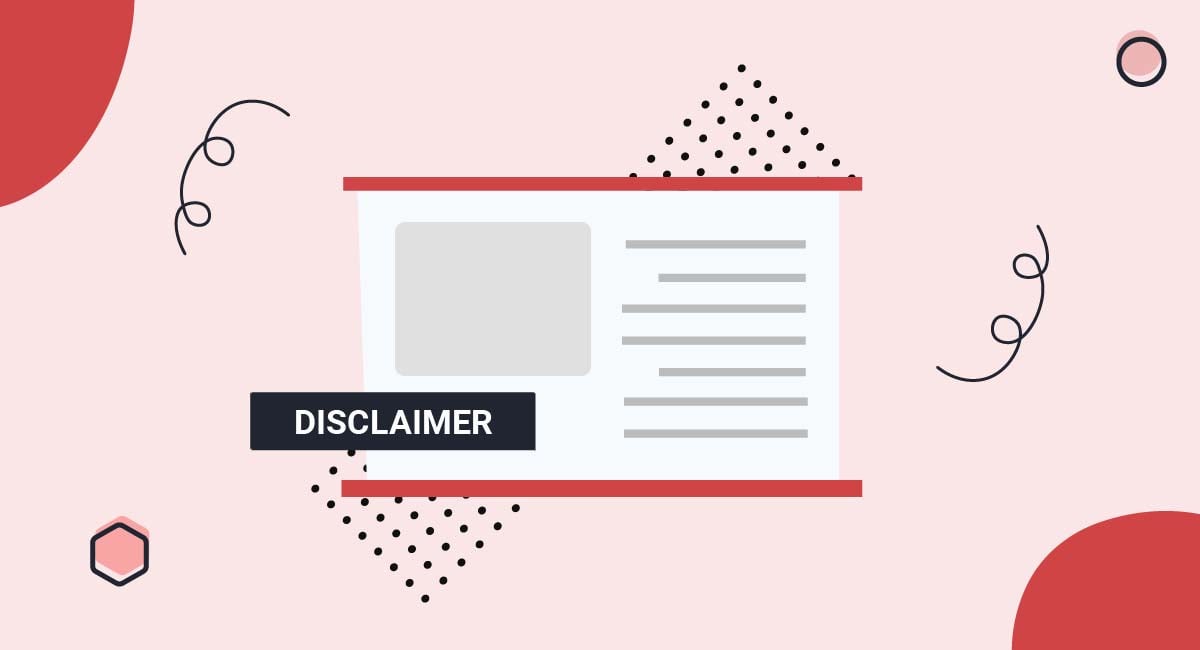

Presentations can benefit from disclaimers because they protect both the presenter and the event host from legal liabilities arising from the content of the presentation while informing the prestentation viewers of important information.
We've put together a list of potential disclaimers to use in your presentations based on the content and the venue. Some of these are generally useful, particularly if the presentation will be published online, and others are targeted towards specific scenarios where a disclaimer may be required by law.
Our Disclaimer Generator can generate a legal disclaimer for your business, website or mobile app. Just follow these steps:

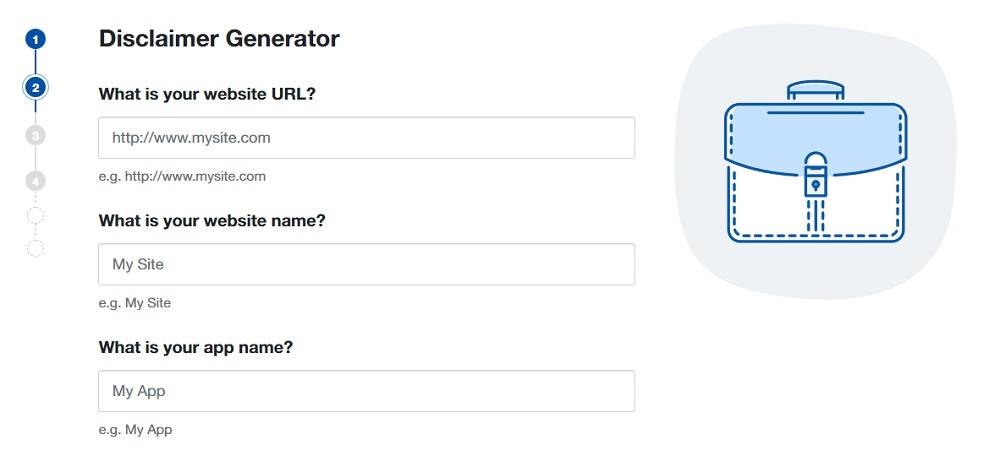
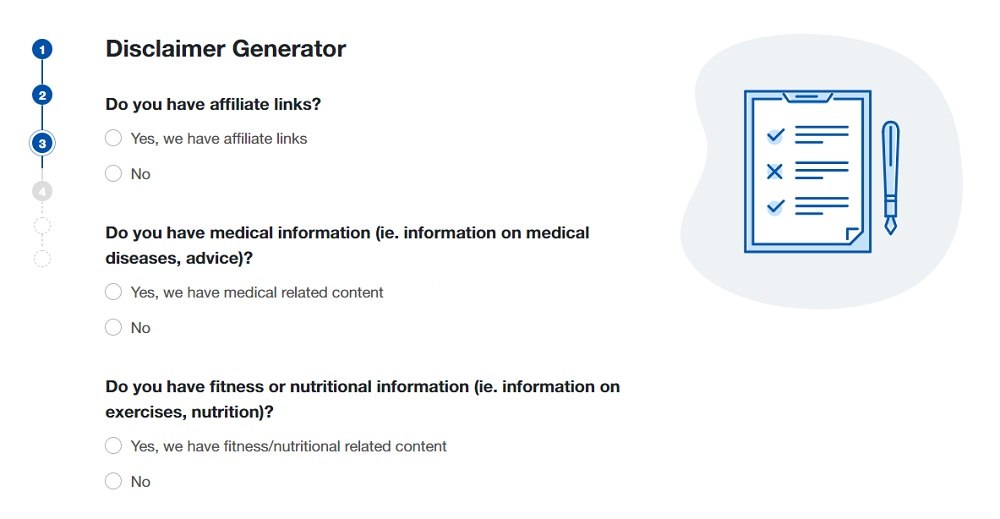
 Done! You'll be able to instantly access and download your new Disclaimer.
Done! You'll be able to instantly access and download your new Disclaimer.A fair use disclaimer announces that you're using copyrighted material for limited purposes under the Fair Use Act. According to the Fair Use Act, it's ok to use copyrighted work without license or permission when you're using it for teaching, research, criticism or commentary.
If you're borrowing another author's work or intellectual property for use in your presentation, don't forget to add this type of disclaimer to protect yourself from allegations of theft.
In addition to citing your sources for any borrowed text or graphics, the fair use disclaimer show that you acknowledge the law in your borrowed sources. While these disclaimers aren't necessary for live presentations (especially with cited sources), adding one is always a good idea if you intend to upload your slides to the internet.
The disclaimer won't protect you if the inclusion of the copyrighted material falls outside of fair use, but it does provide some cover in the event your presentation begins showing up in Google searches.
A fair use disclaimer doesn't need to be complex. The Smithee Awards added this basic disclaimer to its website:

It simply states that the site may contain copyrighted material without asking permission from the owner but that the use falls within the standards of "fair use." It doesn't hurt to add a citation of the law (Title 17, Chapter 1, Section 107 US Copyright Law) to your disclaimer.
Add the disclaimer to a page before the title of your page or to the bibliography at the end of your presentation.
Copyright disclaimers are a simple way to declare that your presentation's contents belong to you and cannot be used without your permission unless noted.
If you are you using materials or ideas that are your own intellectual property, don't forget to add a copyright disclaimer (also referred to as a copyright notice) to your presentation.
These disclaimers can be added to the footer of your presentation or at the very end in a resources page. We recommend using them whenever you're sharing personal intellectual property or that of your company.
A copyright disclaimer is simple. Just add:
Here's an example from SodaStream's website:
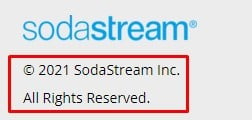
While it's not in a presentation, the format is standard and will be the same wherever you use this disclaimer.
A risk disclaimer states that you cannot be held liable if someone uses the advice or information you're providing and then experiences damages of some kind. It's basically a "use at your own risk" statement.

Here, the legal page talks about the risks inherent in investing for everyone. It says anyone should carefully consider whether they can afford to lose the money they choose to invest.
Here's another example from Macquarie's disclaimer that addresses risks along with other issues:

If you're creating a finance-related presentation, this kind of disclaimer should be placed at the beginning or end of your presentation. If the advice you're giving isn't financial but still comes with risks, the same format of a disclaimer can be used, but tailored for your particular industry.
For example, if instead of giving financial advice you give exercise and fitness advice, your disclaimer should make it clear that you aren't a health professional and that risks come with new exercise routines. As another example, say your presentation is for how to build a piece of furniture and requires the use of power tools and other dangerous tools. You should include a disclaimer that states there may be a risk to using the tools and completing the steps in the presentation.
This type of disclaimer states that your presentation may not include all relevant facts or the most up-to-date research, and you're not liable in the event that omissions or errors occur.
There's no time to include every important fact or caveat within the time or slide limit of a presentation. What's more, some presentations don't age well because the subject is constantly evolving.
Rather than worrying about the eventualities of presentations, protect yourself by adding an errors and omission disclaimer.
Maloney and Novotny offers this disclaimer that addresses errors, omissions, and the accuracy and completeness of information:

Adding a disclaimer like this to the beginning of your presentation is a smart idea.
This type of disclaimer states that the information provided isn't to be shared. Essentially, it tells your audience that what is said in the room should stay in the room.
Presentations given at private events, like board meetings or ticketed conferences, may include information that shouldn't leave the room.
If your presentation falls within this category, add a confidentiality disclaimer.
You can do this with a short, to-the-point statement early on in the presentation, such as on the title slide or as the first slide after the title slide and before any actual content is presented.
Here's how the Ankeny Board of Education displays its confidentiality disclaimer at the beginning of its presentation, giving it an entire slide:

Alternatively, or in conjunction with this approach, you can include a short statement about the confidentiality of the presentation at the bottom of every slide. Here's an example of such a statement:
![]()
Other companies include longer disclaimer pages at the beginning of presentations that include confidentiality disclaimers and any other disclaimers that they wish to display.
Moovly dedicates the first two slides after its title slide to disclose a number of disclaimers, including a confidentiality disclaimer

This is an effective way to present all of your relevant disclaimers at once and before any information is shared with the people viewing your presentation.
If you are sharing personal opinons that shouldn't be associated with the company you work for or the organization hosting the presentation, this disclaimer can create separation between your presentation and other parties. It will state that the views expressed in your presentation don't necessarily reflect the views of anyone else.
Some presentations are developed in line or conjunction with another body, but the information or opinions don't legally represent them. In these cases, it's important to add a views expressed disclaimer to provide distance between the presenter and any associated organizations.
Here's an example:
You work for a media organization, and you've been invited to speak at a university about your experiences in new media. You've been invited with the knowledge of your affiliation, but you're not invited to represent your organization.
In the event that you were formally representing your employer, your presentation would likely follow a set of company guidelines. But since you're not, you have significantly more freedom to express yourself. Adding a 'views expressed' disclaimer informs your audience that the views expressed are your own and don't reflect your employer.
The disclaimer clears up any ambiguity about the information you provide and could even protect your job in the event you say something that doesn't jive with your organization's media messaging.
Novartis added this disclaimer to a presentation uploaded to its website:

If you have users sign up for an account with you or provide an email address before you share your presentation with them, you can share your disclaimer at sign-up, as seen here:

These disclaimers tend to be very short and with boilerplate, standard language as seen in the example above.
A general presentation disclaimer will address a number of topics in one disclaimer, such as errors and omissions, confidentialilty issues, and copyright notices.
If you're posting your presentations online, consider using a broad presentation disclaimer to cover yourself across anything uploaded.
The Society of Actuaries has a presentation disclaimer on its main website. The text states that the presentations are provided for educational use only and do not replace the judgement of independent professionals. It also limits liability because it notes that the Society of Actuaries is in no way responsible for the accuracy or message of the content.
Ultimately, this disclaimer addresses many of the topics found in previous disclaimers:

This disclaimer is both general and sweeping and thus could easily be adapted and modified for any website, app, or guidebook where your presentations may be made available.
Disclaimers help protect you from legal liability when used appropriately in your presentations.
As more presentations transition from PowerPoints in boardrooms to the online sphere, it's important to add the same protections to your presentations that you might to other online content, particularly when you're working with your or someone else's intellectual property.
The disclaimers listed above won't apply to ever presentation, but there's a good chance you'll need to use at least one on future work.
Already have a database full of past presentations? You can post a "presentation disclaimer" on your main website to retroactively protect your work and limit your liability.
Comply with the law with our agreements, policies, and consent banners. Everything is included.
Disclaimer
This article is not a substitute for professional legal advice. This article does not create an attorney-client relationship, nor is it a solicitation to offer legal advice.
Last updated on
Appears in
Related articles
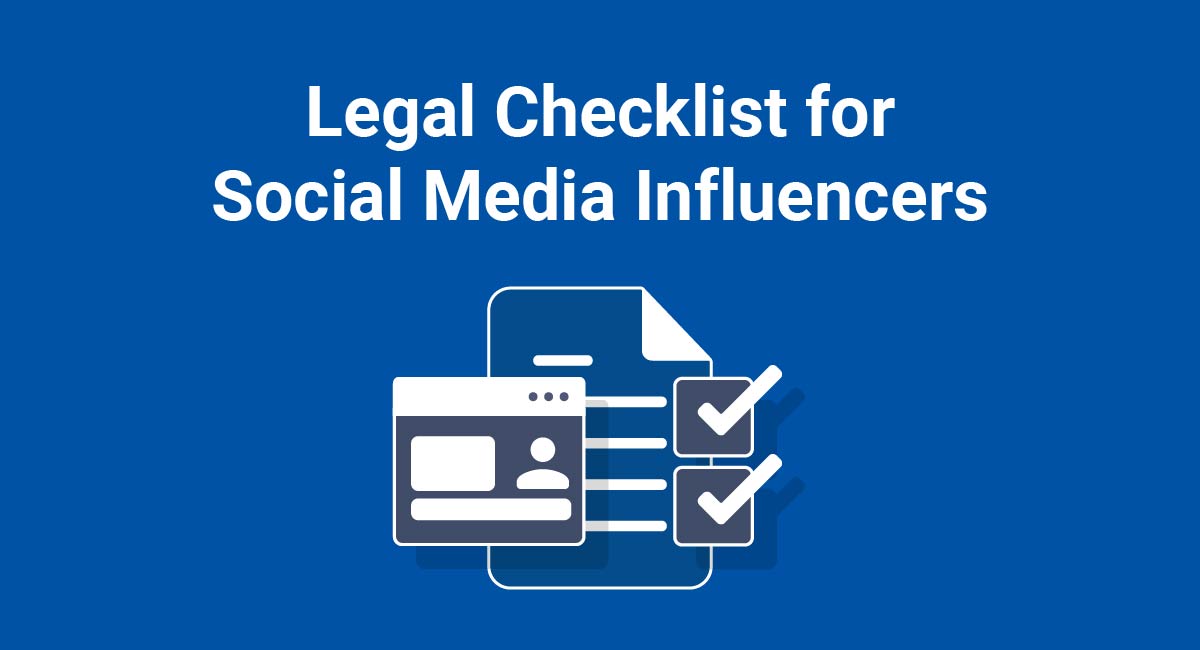
Social media has drastically changed advertising. Along with the more conventional forms of marketing, such as print, TV, radio, and pay-per-click ads, businesses are buying the influence of social media personalities. Social media influencers could be a great way to promote your business online. However, before you begin advertising in this.
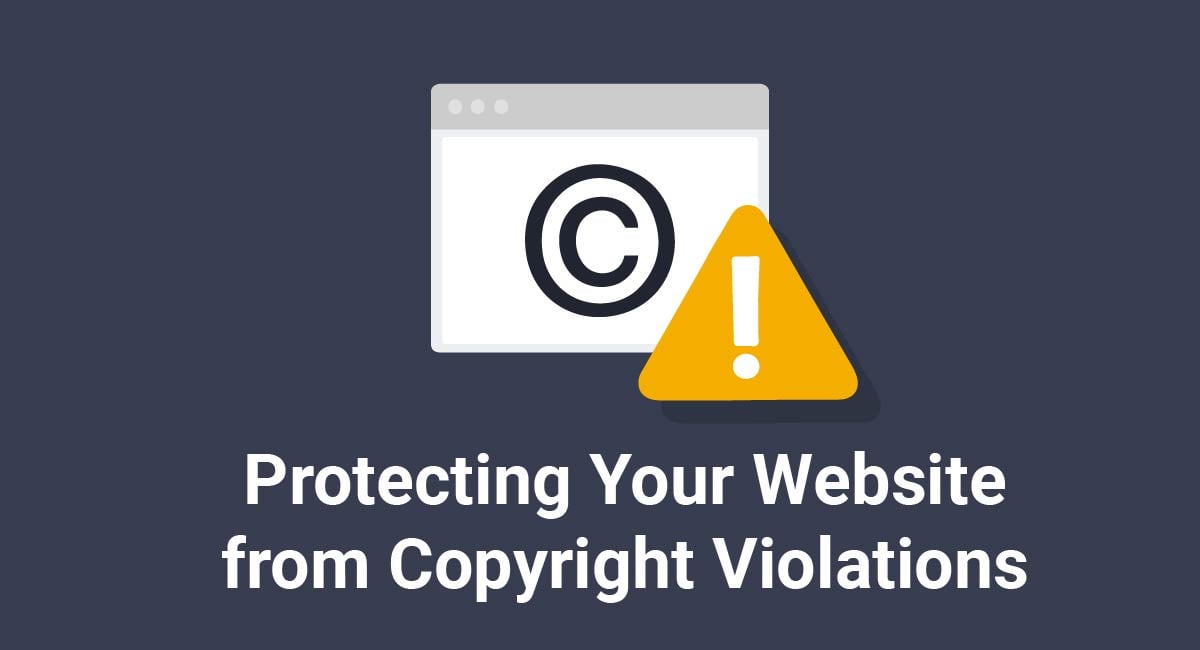
Every company that has a website should work to protect its online assets from copyright violations. Safeguarding your brand is essential, so spotting copyright infringement issues and resolving them as soon as possible is a necessity. Below, we'll take a look at the fundamentals of protecting your website from copyright violations.

If you publish YouTube videos, you may need to include some specific disclaimers in your videos or the video description. Not using disclaimers on your videos can potentially lead to legal issues. This is because people take videos just as seriously or even more seriously than they take articles and.
Comply with the law with our agreements, policies, tools and cookie consent banners. Everything you need is included.
Disclaimer: Legal information is not legal advice, read the disclaimer. The information provided on this site is not legal advice, does not constitute a lawyer referral service, and no attorney-client or confidential relationship is or will be formed by use of the site.
Copyright © 2012 - 2024 TermsFeed ® . All rights reserved.